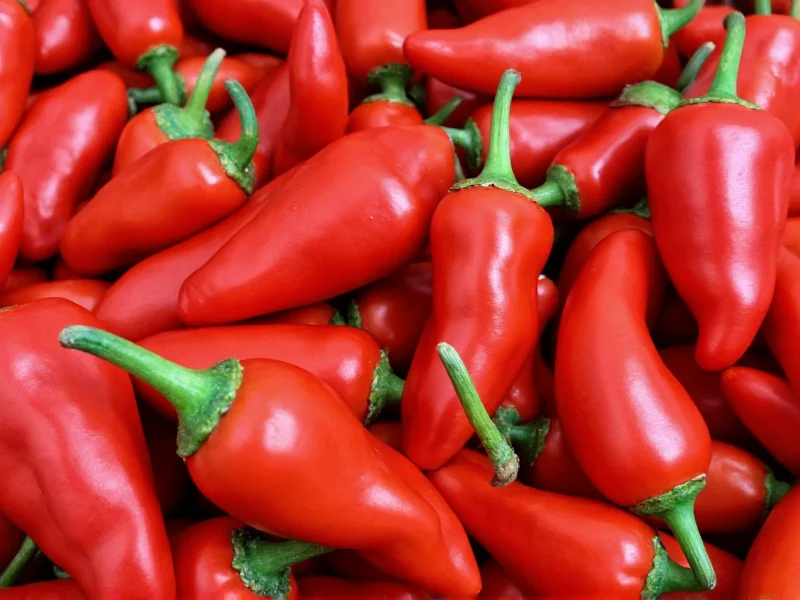Understanding the difference between paprika and cayenne pepper is essential for home cooks and professional chefs alike. These two red spices often cause confusion in the kitchen, leading to unexpectedly mild or fiery dishes. This comprehensive guide clarifies their distinctions, origins, flavor profiles, and proper usage to help you make informed decisions in your culinary creations.
Origins and Production Methods
Paprika and cayenne pepper both derive from Capsicum annuum peppers, but different varieties are used in their production. Paprika typically comes from larger, sweeter pepper varieties like bell peppers and banana peppers, while cayenne is made exclusively from slender, pointed cayenne peppers.
The production process also differs significantly. Authentic Hungarian paprika undergoes a meticulous process where peppers are roasted over oak fires before grinding, creating complex flavor notes. In contrast, cayenne pepper is usually made from dried, unroasted peppers ground into a fine powder. This fundamental difference in processing contributes substantially to their distinct flavor profiles.
Heat Level Comparison
One of the most critical differences between paprika same as cayenne pepper is their heat intensity. Many home cooks mistakenly believe these spices are interchangeable, potentially ruining recipes with incorrect heat levels.
| Spice Type | Scoville Heat Units | Heat Level Description | Common Culinary Uses |
|---|---|---|---|
| Sweet Paprika | 100-150 SHU | Mild, sweet, no noticeable heat | Coloring dishes, Hungarian goulash, deviled eggs |
| Hot Paprika | 1,500-2,500 SHU | Moderate heat with sweet undertones | Spanish chorizo, some Mexican dishes |
| Cayenne Pepper | 30,000-50,000 SHU | Intense, immediate heat with sharp finish | Cajun cuisine, hot sauces, spice blends |
Flavor Profiles and Culinary Applications
When considering paprika vs cayenne pepper, flavor complexity matters as much as heat. Paprika offers a nuanced flavor spectrum depending on its variety:
- Sweet paprika provides vibrant red color with sweet, slightly fruity notes and no heat
- Smoked paprika (pimentón) delivers deep, woodsy flavors from traditional oak-smoking
- Hot paprika combines moderate heat with the characteristic paprika sweetness
Cayenne pepper, by contrast, delivers a one-dimensional heat experience with minimal flavor complexity beyond its intense spiciness. This fundamental difference explains why substituting cayenne for paprika often results in dishes that are unpleasantly hot without the intended flavor balance.
Common Misconceptions Explained
The confusion between paprika same as cayenne pepper stems from several factors. Both appear as bright red powders, leading many to assume they're identical. Additionally, some lower-quality spice brands mislabel products or create inconsistent blends that blur the distinction.
Another contributing factor is regional naming differences. In some countries, particularly in parts of Europe, "paprika" refers to any ground chili pepper, including hotter varieties that would be classified as cayenne elsewhere. This linguistic variation further complicates understanding the difference between paprika and cayenne pepper for international cooks.
Practical Substitution Guide
Understanding when you can substitute paprika for cayenne (or vice versa) is crucial for successful cooking. The general rule: you can substitute sweet paprika for cayenne only if you're seeking color without heat, but never substitute cayenne for sweet paprika if you want to avoid overwhelming heat.
For recipes calling for cayenne where you want to reduce heat:
- Use hot paprika at a 2:1 ratio (2 parts hot paprika to 1 part cayenne)
- Combine sweet paprika with a pinch of red pepper flakes for controlled heat
- For significant heat reduction, use smoked paprika which provides depth without intense spice
When substituting for paprika in recipes requiring its distinctive flavor:
- Never use cayenne as a direct substitute for sweet paprika
- For color only, use tomato paste or beet powder
- For smoked paprika flavor, try chipotle powder at half the amount
Choosing Quality Spices
Selecting the right product matters when working with paprika and cayenne pepper. For authentic Hungarian paprika, look for designations like "Édesnömör" (sweet), "Különleges" (special), or "Erős" (hot). Spanish paprika will often specify "dulce" (sweet), "agridulce" (bittersweet), or "picante" (hot).
Cayenne pepper should list only "cayenne pepper" or "red pepper" as ingredients without fillers. Premium cayenne will specify its origin, such as "Louisiana cayenne" or "African bird's eye cayenne," indicating distinctive flavor profiles beyond mere heat.
Storage and Shelf Life
Both spices lose potency over time, but at different rates. Paprika's vibrant color and flavor degrade faster than cayenne's heat. For optimal freshness:
- Store both in airtight containers away from light and heat
- Paprika maintains quality for 6-12 months; cayenne lasts 1-2 years
- Freeze paprika in small portions for extended shelf life
- Test paprika by rubbing between fingers—if little color transfers, it's lost potency











 浙公网安备
33010002000092号
浙公网安备
33010002000092号 浙B2-20120091-4
浙B2-20120091-4